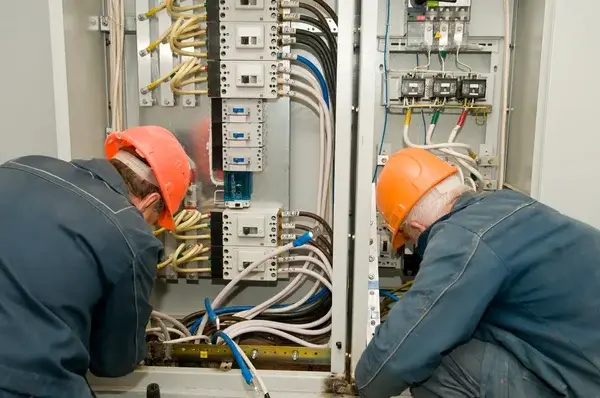
If your home has any appliances that run on natural gas, there is a risk that you need to be aware of. Combustion of natural gas produces a chemical byproduct called carbon monoxide, and this substance can be extremely dangerous. Carbon monoxide is a colorless, odorless, tasteless, and otherwise undetectable gas that can generally only be reliably picked up by specialized detectors. However, despite this undetectability, it possesses great danger to humans and pets. Carbon monoxide is toxic, and when ingested in high quantities, it can significantly damage your health.
While many homeowners are aware of the danger of carbon monoxide, few know what it is, why it is so dangerous, and how to properly protect themselves and their homes from it. That’s what this blog aims to address: we’ll provide some valuable tips for how to properly protect yourself from carbon monoxide as well as how to mitigate the threat so you can continue to use natural gas appliances in a way that is safe and reliable.
Where Does Carbon Monoxide Come From?
To put it simply: carbon monoxide forms when something burns. Combustion causes a carbon atom to bond with a single oxygen atom, creating a carbon monoxide molecule. Many of these molecules actually bond with a second oxygen atom to create carbon dioxide, an inert and extremely common gas that is found plentifully in our atmosphere. In fact, this is why cars output so much carbon dioxide gas—because the combustion process in an engine cylinder creates a ton of it.
However, the atoms that do not bond with an oxygen atom do continue to subsist in certain quantities as carbon monoxide. The longer something burns, the more exhaust it creates, and the more exhaust it creates, the more carbon monoxide it releases into the atmosphere. When atmospheric concentrations reach a certain level of carbon monoxide, that atmosphere becomes extremely dangerous. This is a particularly common threat during the winter season homes that burn fuel like natural gas to generate heat because they keep doors and windows shut in order to seal that heat inside.
How We Deal with Carbon Monoxide
If carbon monoxide is such a threat, why do we use natural gas so frequently in our homes? The answer is because we have ways of easily and safely doing so by mitigating the natural gas threat. For example, gas burning water heaters and furnaces produce a fair amount of carbon dioxide, but they contain it with proper exhaust systems. As these units burn fuel to produce heat, the exhaust they create is contained and then safely released through an exhaust vent that leads to the outdoors. This is what that large pipe leading out of the tops of your water heater and furnace are for. If you go into your attic and notice that these pipes are not leading to a vent outside of your roof, then you should call a professional and have this fixed right away, as the exhaust and carbon monoxide are not being properly vented away from your home.
Detecting Carbon Monoxide
Carbon monoxide is impossible for the average human to detect on their own because the gas is colorless, odorless, and tasteless in its natural state. So how can you know if your home has an elevated level of carbon dioxide? The answer is simple: with a carbon monoxide detector. These devices regularly test the air in your home for carbon monoxide concentration, and will emit a loud alarm if this concentration level ever goes above a certain calibrated point. This point is typically well below levels that are considered truly “dangerous,” and that should give you plenty of time to react and get to safety before your health is truly compromised.
Carbon monoxide detectors work best when they are placed strategically. For example, we recommend placing a detector in the closet with your furnace, near your water heater, and potentially even in your kitchen if you use a gas-powered range top and oven. If you use an electronic detector, make sure you test it periodically and change the batteries at regular intervals in order to ensure it is always protecting you. If your detector is not electronic, it will only last a certain amount of time before it will need to be replaced. Never let your detectors get out of date.
Is your exhaust line from your furnace or water heater showing signs of wear? Are you concerned about carbon monoxide concentration? Call Winters Home Services at (503) 694-3396 today to schedule an inspection and let us help you ensure your home is as safe as possible this winter!
5 Star Rated
Quality Service That Will Make You Smile

Serving All Members of Your Family
Family is built into our company name. For over 50 years, our family-owned & operated HVAC business has taken care of our neighbors. We focus on care for our team so they can focus on care for our customers.


.webp)
.svg)


